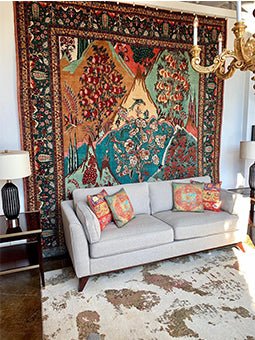Offer
Provide additional details about the offer you're running.

Persian area rugs are not just floor coverings; they are woven pieces of art that bring history, culture, and beauty into any room. RenCollection Rugs in Dallas, TX, takes pride in offering a diverse selection of handmade, handwoven, and handknotted Persian area rugs, each telling a unique story through its intricate patterns and craftsmanship. In this blog, we delve into the rich heritage of Persian rugs, their enduring appeal, and why they are a cherished addition to any home.
Persian rugs have a history that spans centuries, originating from ancient Persia (modern-day Iran). Known for their meticulous craftsmanship and artistic value, these rugs often feature intricate floral motifs, geometric patterns, and vibrant colors that reflect the region's cultural and artistic heritage.
Handmade Persian rugs are crafted using traditional techniques passed down through generations. Skilled artisans meticulously hand-knot each rug using high-quality materials such as wool, silk, or a blend of both. The knot density, known as knots per square inch (KPSI), determines the rug's durability, intricacy of design, and value.
Persian rugs come in various styles and designs, each originating from different regions within Iran. Some of the most renowned types include:
Persian rugs offer several benefits that make them a worthwhile investment:
To preserve the beauty and longevity of your Persian rug, follow these care tips:
At RenCollection Rugs, we are passionate about offering the finest Persian area rugs in Dallas, TX:
Q: Are Persian rugs only made in Iran? A: Yes, true Persian rugs are exclusively made in Iran, using traditional methods and techniques that have been preserved for centuries.
Q: What is the best room for a Persian rug? A: Persian rugs can enhance the beauty of any room, from living rooms and dining rooms to bedrooms and home offices. Consider the rug's size and design when choosing the best placement.
Q: How can I tell if a Persian rug is authentic? A: Look for signs of craftsmanship such as hand-knotting, intricate designs, and quality materials. Authentic Persian rugs often come with a certificate of origin.
Enjoy an exclusive 5% discount on your first order as a warm welcome from us. Add beauty and comfort to your home—shop now and save!